Any ideas / feedback are welcome :)
I run into a problem in how to handle business logic around my Doctrine2 entities in a big Symfony2 application. (Sorry for the post length)
After reading many blogs, cookbook and others ressources, I find that :
- Entities might be used only for data mapping persistence ("anemic model"),
- Controllers must be the more slim possible,
- Domain models must be decoupled from persistence layer (entity do not know entity manager)
Ok, I'm totally agree with it, but : where and how handle complex bussiness rules on domain models ?
A simple example
OUR DOMAIN MODELS :
- a Group can use Roles
- a Role can be used by different Groups
- a User can belong to many Groups with many Roles,
In a SQL persistence layer, we could modelize these relations as :

OUR SPECIFIC BUSINESS RULES :
- User can have Roles in Groups only if Roles is attached to the Group.
- If we detach a Role R1 from a Group G1, all UserRoleAffectation with the Group G1 and Role R1 must be deleted
This is a very simple example, but i'd like to kown the best way(s) to manage these business rules.
Solutions found
1- Implementation in Service Layer
Use a specific Service class as :
class GroupRoleAffectionService {
function linkRoleToGroup ($role, $group)
{
//...
}
function unlinkRoleToGroup ($role, $group)
{
//business logic to find all invalid UserRoleAffectation with these role and group
...
// BL to remove all found UserRoleAffectation OR to throw exception.
...
// detach role
$group->removeRole($role)
//save all handled entities;
$em->flush();
}
- (+) one service per class / per business rule
- (-) API entities is not representating to domain : it's possible to call
$group->removeRole($role)out from this service. - (-) Too many service classes in a big application ?
2 - Implementation in Domain entity Managers
Encapsulate these Business Logic in specific "domain entities manager", also call Model Providers :
class GroupManager {
function create($name){...}
function remove($group) {...}
function store($group){...}
// ...
function linkRole($group, $role) {...}
function unlinkRoleToGroup ($group, $role)
{
// ... (as in previous service code)
}
function otherBusinessRule($params) {...}
}
- (+) all businness rules are centralized
- (-) API entities is not representating to domain : it's possible to call $group->removeRole($role) out from service...
- (-) Domain Managers becomes FAT managers ?
3 - Use Listeners when possible
Use symfony and/or Doctrine event listeners :
class CheckUserRoleAffectationEventSubscriber implements EventSubscriber
{
// listen when a M2M relation between Group and Role is removed
public function getSubscribedEvents()
{
return array(
'preRemove'
);
}
public function preRemove(LifecycleEventArgs $event)
{
// BL here ...
}
4 - Implement Rich Models by extending entities
Use Entities as sub/parent class of Domain Models classes, which encapsulate lot of Domain logic. But this solutions seems more confused for me.
For you, what is the best way(s) to manage this business logic, focusing on the more clean, decoupled, testable code ? Your feedback and good practices ? Have you concrete examples ?
Main Ressources :
- Symfony managing entities
- Symfony2/Doctrine, having to put business logic in my controller? And duplicating controller?
- Extending Doctrine Entity in order to add business logic
- http://iamproblematic.com/2012/03/12/putting-your-symfony2-controllers-on-a-diet-part-2/
- http://l3l0.eu/lang/en/2012/04/anemic-domain-model-problem-in-symfony2/
- https://leanpub.com/a-year-with-symfony